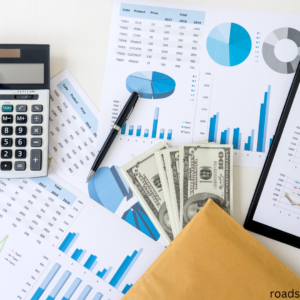

In the trucking industry, financial metrics are critical to understanding how well your business is performing. Two commonly used terms are RPM (Revenue Per Mile) and CPM (Cost Per Mile). While they sound similar, these metrics measure very different aspects of your business. Knowing the difference between RPM and CPM can help you make informed decisions, improve profitability, and grow your trucking operation.
RPM, or Revenue Per Mile, refers to the amount of money your trucking business earns for every mile driven. This metric helps you understand the income generated from each trip, load, or delivery.
The formula for calculating Revenue Per Mile (RPM) in text format is:
RPM = Total Revenue ÷ Total Miles Driven
Total Revenue: The total income earned for a specific trip or load, including freight payments, fuel surcharges, and bonuses.
Total Miles Driven: The total distance traveled, including both loaded miles and empty (deadhead) miles.
For example:
If you earn $2,500 for a load and drive a total of 1,000 miles (including empty miles), the calculation would be:
RPM = $2,500 ÷ 1,000 = $2.50
This means you earned $2.50 for every mile driven.
CPM, or Cost Per Mile, measures how much it costs your business to operate per mile driven. This includes both fixed and variable expenses, such as fuel, maintenance, insurance, driver wages, and truck payments.
The formula for calculating Cost Per Mile (CPM) in text format is:
CPM = Total Costs ÷ Total Miles Driven
Total Costs: The total expenses incurred to operate your trucking business for a specific trip or time period. This includes both fixed costs (e.g., insurance, truck payments, permits) and variable costs (e.g., fuel, maintenance, tolls, driver wages).
Total Miles Driven: The total distance traveled, including both loaded miles and empty (deadhead) miles.
This calculation shows that it costs $2.50 to operate your truck for every mile driven.
Tracking CPM regularly helps you:
The difference between RPM and CPM is where you find your profit margin.

"Choosing between RPM (Revenue Per Mile) and CPM (Cost Per Mile) is crucial for trucking businesses, as it allows owners to assess profitability, optimize routes, and ensure that the revenue generated outweighs operational costs, leading to more sustainable and efficient operations"
To run a successful trucking business, you need to track both RPM and CPM regularly. Here’s how:
Understanding the difference between RPM and CPM is crucial for any trucking business owner. While RPM shows how much money you’re bringing in, CPM reveals how much you’re spending. Together, these metrics provide a complete picture of your financial health and guide you in making strategic decisions to boost profitability.
By regularly calculating and analyzing these numbers, you can ensure your trucking business stays on the road to success.
For personalized advice on managing your business finances, check out our 1:1 mentorship programs



info@roadstoprofits.com
Mon-Fri 9am- 6 Pm
Join Our Community